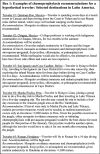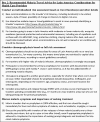Review: Malaria chemoprophylaxis for travelers to Latin America
- PMID: 22144437
- PMCID: PMC3225145
- DOI: 10.4269/ajtmh.2011.11-0464
Review: Malaria chemoprophylaxis for travelers to Latin America
Abstract
Because of recent declining malaria transmission in Latin America, some authorities have recommended against chemoprophylaxis for most travelers to this region. However, the predominant parasite species in Latin America, Plasmodium vivax, can form hypnozoites sequestered in the liver, causing malaria relapses. Additionally, new evidence shows the potential severity of vivax infections, warranting continued consideration of prophylaxis for travel to Latin America. Individualized travel risk assessments are recommended and should consider travel locations, type, length, and season, as well as probability of itinerary changes. Travel recommendations might include no precautions, mosquito avoidance only, or mosquito avoidance and chemoprophylaxis. There are a range of good options for chemoprophylaxis in Latin America, including atovaquone-proguanil, doxycycline, mefloquine, and--in selected areas--chloroquine. Primaquine should be strongly considered for nonpregnant, G6PD-nondeficient patients traveling to vivax-endemic areas of Latin America, and it has the added benefit of being the only drug to protect against malaria relapses.
Figures
Comment in
-
Malaria prophylaxis in Latin America: a controversial topic.Am J Trop Med Hyg. 2012 Jul;87(1):190-191. doi: 10.4269/ajtmh.2012.12-0193a. Am J Trop Med Hyg. 2012. PMID: 22764313 Free PMC article. No abstract available.
References
-
- Mueller I, Galinski MR, Baird JK, Carlton JM, Kochar DK, Alonso PL, del Portillo HA. Key gaps in the knowledge of Plasmodium vivax, a neglected human malaria parasite. Lancet Infect Dis. 2009;9:555–566. - PubMed
-
- The World Health Organization . The World Malaria Report 2010. Geneva: WHO; 2010.
-
- Mali S, Steele S, Slutsker L, Arguin PM. Malaria surveillance–United States, 2008. MMWR Surveill Summ. 2010;59:1–15. - PubMed
Publication types
MeSH terms
Substances
LinkOut - more resources
Full Text Sources
Medical
Miscellaneous



